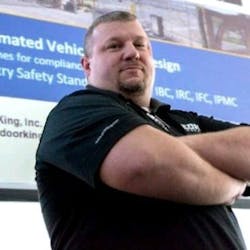Vehicle Mitigation Barriers on the Lighter Side
Vehicle mitigation barriers are pivotal in modern security infrastructure, effectively countering many threats and vulnerabilities. These barriers, including robust bollards and strategically placed checkpoints, protect sensitive areas and significantly enhance public safety. In an age where vehicular attacks pose a substantial risk, these barriers serve as a critical defense against vehicles being used as weapons.
Vehicle mitigation barriers primarily prevent unauthorized access to restricted zones, ensuring that only authorized individuals and vehicles can enter high-security areas like government buildings, military installations, and critical infrastructure. This control is vital for maintaining security and preventing potential threats.
Additionally, these barriers protect public spaces from vehicular attacks by absorbing and deflecting the impact of high-speed vehicles, reducing casualties and damage. In urban environments, where pedestrian traffic is dense, they create a physical separation that enhances safety.
Their versatility also makes them invaluable for securing events and public gatherings, providing temporary yet effective security perimeters. The mere presence of these barriers can deter potential attackers, signaling robust security measures.
In this Q&A column, we will delve into the unique features of DoorKing's 1625 wedge barrier, a vehicle mitigation barrier that addresses a distinct yet significant threat. This product was designed to meet medium to light vehicle mitigation requirements and boasts easier installation than other products in its class. We had the opportunity to discuss this innovative perimeter technology with DoorKing's Business Development Managers, Allen Wright and Bryan Morgan.
Security Technology Executive (STE): Why did DoorKing develop this product?
Bryan Morgan: We saw an underserved market segment with vehicle crash-rated products. Most of these products were developed to stop heavy vehicles (up to 15,000 Lbs.) traveling up to 50 MPH.
Not only does this type of crash barrier require a lot of steel, but they also require deep excavations, 24 inches and greater in many cases, which now require a lot of concrete and rebar. This adds to the overall expense of these systems. We saw a need for a mid-range crash barrier product to stop a typical pickup truck, SUV and other passenger vehicles. Our product was designed with these parameters in mind and is crash-rated to ASTM F2656 with a PU-30 (P1, P2) rating.
STE: Explain the unique qualities of the product.
Allen Wright: The 1625 wedge barrier was designed to be counterbalanced. This eliminates the need for hydraulic lines, pumps, and reservoirs, and there is no need to worry about hydraulic fluid leaks. The 1625 only requires AC power for the operator that moves the wedge from the Down to the Up position, and vice versa.
Morgan: A red/green traffic signal can also be integrated with the wedge barrier and is offered in two heights, one for passenger vehicles and one for semi-trucks. The signal clearly signals to a driver when it is safe to pass through the traffic lane.
STE: How is the 1625 Wedge Operated?
Wright: A barrier arm operator is mechanically linked to the wedge counterbalance system. When the barrier arm is down, the wedge is up, and when the barrier arm is up, the wedge is down. This is a nut and bolt connection, with no hydraulic lines to run or additional motors to connect. The barrier arm provides a clear signal to a driver when it is safe to pass through. An LED reversing edge can be added to the barrier arm, turning green when the arm is in the full-up position and remaining red in all other positions.
STE: What markets will this serve and why?
Morgan: This product is extremely useful for all applications where a high degree of security is required, but the traffic is limited to SUVs, pickup trucks, and standard vehicles. Parking lots, employee parking, gated communities, and apartment complexes are examples of a market segment to keep unauthorized vehicles out. Another market segment is rental car agencies whose goal is to keep cars in and from being stolen. Thieves will target a rental car lot where the keys are already in the car and crash through existing barriers with the stolen vehicle. Many agencies are now installing crash barriers to prevent this from happening.
STE: What about collaboration between the end user, manufacturer and installer on designing and installing a wedge barrier system?
Morgan: Many car rental agencies store their vehicles in on-site parking garages at many airports nationwide. These multi-level garages have their own very specific issues regarding installing crash barrier systems. Deep excavation is not an option; in many cases, a shallow excavation is impossible. The only option is a surface mount system, which will have its own very specific requirements involving the end user, integrator, and manufacturer.
Since multi-level parking garages are typically designed with prestressed concrete floors, the installer cannot simply drill into the floor and mount the system. The end user needs to tell the installer exactly where the barriers will be located, the integrator will need to work with the building design engineers to locate and mark prestressed cables in the floor (usually by X-ray), and the installer will need to ensure that they anchor the system to the floor following the manufacturers recommended instructions.
STE: Who should a customer contact?
Wright: Bryan and I also focus on world-class customer service. We are the points of contact from the start of a project. If multiple sites are involved, only one phone call needs to be made; we'll do the rest. We also offer project site visits free of charge. We'll provide on-site security assessments and offer suggestions that best meet your needs to deter, detect, and mitigate theft.
STE: Where do you see this product developing 4-5 years later?
Morgan: We believe that this market segment is still somewhat in its infancy. The bell curve is still rising. Vehicles are more expensive than ever, and the cost of protecting them is paid off when vehicles are not stolen or when private property is protected.
Wright: This will likely be a growing product for paid parking facilities in the future as well. Revenue loss at these locations is increasing. Customers are simply running through and breaking typical parking arms. Customers who have acquired large fees have found parking arms are easily defeated, costing owners hundreds of dollars in possible lost revenue.




